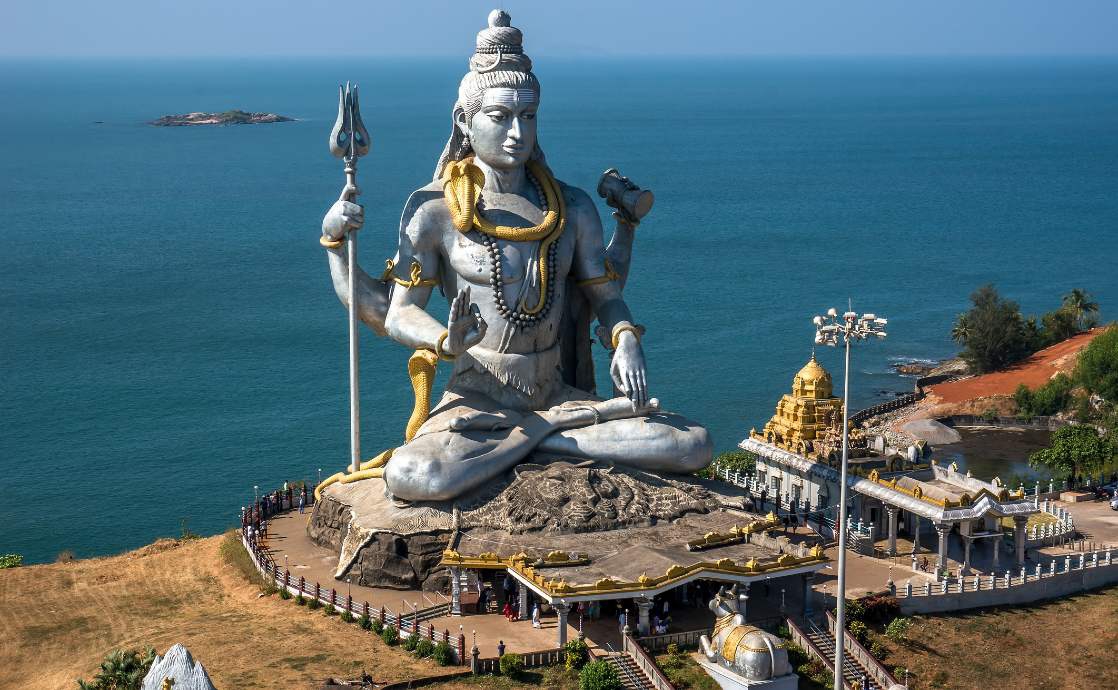The views expressed in our content reflect individual perspectives and do not represent the authoritative views of the Baha'i Faith.
Have you seen the many-armed, dancing Hindu god, often shown surrounded by fire, named Shiva?
Known in the East as the Great Yogi or Adiyogi Shiva, and as the first revealer of yoga to the early Hindu sages, Shiva, according to the scholar of Hindu art “teaches in silence the oneness of one’s innermost self (atman) with the ultimate reality (brahman).”
The ancient Hindu text the Asvara Gita — which literally means “Shiva’s song” — is the foundational document for the philosophy and techniques of yoga.
RELATED: Do Hindus Believe in One God or Many?
A common sight in Hindu households, images or statues of Shiva (or Siva) represent one of the Hindu supreme beings who protect, transform, and create the universe. Hindus often refer to this particular representation of Shiva as “nataraja,” or “Lord of dance.”
In these images, Shiva performs the Ananda Tandava or “dance of bliss,” the symbolic interplay of movement and destruction in which the universe is created, maintained, and dissolved.
Why would a deity dance? The Judeo-Christian tradition tends to describe the Creator as alternatively stern or loving, but rarely as a joyful dancer, so the idea may seem strange to Westerners at first. But a dancing deity, to Hindus, represents the movement inherent in the universe, to which we are connected and to which we all respond.
RELATED: Four Types of Yoga that Don’t Require a Mat
The Baha’i teachings describe this spiritual impetus, this dance of creation, in similar joyous ways. In this passage from Abdu’l-Baha, the son and successor of Baha’u’llah, he portrays the coming of a new messenger of God as a divine springtime when “all creation leapt and danced:”
When the Sun of Reality shed its endless bounties from the Dawning-Point of all desires, and this world of being was lit with that sacred light from pole to pole, with such intensity did it cast down its rays that it blotted out the Stygian dark forever, whereupon this earth of dust became the envy of the spheres of heaven, and this lowly place took on the state and panoply of the supernal realm.
The gentle breeze of holiness blew over it, scattering abroad sweet savours; the spring winds of heaven passed by it, and over it, from the Source of all bestowals, were wafted fruitful airs that carried boundless grace. Then the bright dawn rose, and there came tidings of great joy. The divine springtime was here, pitching its tents in this contingent world, so that all creation leapt and danced.
So, if you do encounter one of those depictions of Shiva, it’s a good sign that you have found a Shaivite (sometimes spelled Saivite), a follower of one of the four major Hindu traditions and a worshipper of Shiva.
Look carefully and you’ll see the dancer in the image stepping on a small demon, which represents ignorance being crushed. Shiva’s dance is the dance and rhythm of life and represents change — the destruction of the old out of which life arises. The dance can have many meanings depending on how it is performed. A gentler version of the dance, often associated with the goddess Parvathi (Shiva’s wife and the mother of Ganesha), is called lasya. Baha’is, too, understand that God’s work occurs through spiritual cycles or seasons which uproot the old and lay out the new in its stead.
Other signs of being in a Shaivite house would be a picture or image of a white-skinned god (who may have a blue throat) holding a trident. The trident symbolizes both the three forces that humans need to overcome: ego, bad deeds, and delusion; and three forces useful in this regard: knowledge, will and action. To Baha’is these are very important undertakings, as well.
Other signs that a male god may be Shiva is wearing a crescent moon in the hair, the moon symbolizing the rhythms of nature; holding an hourglass shaped drum that counts out time; or if the image has a cobra around his neck, which symbolizes cosmic force. In pictures of Shiva, there is often a white bull named Nandi in the background — that too is a clue of who the image represents.
RELATED: The Spiritual Meaning and Symbolism of the Moon
Keep in mind that while it is likely that the image of Siva (or any Hindu god) is simply an artistic reminder of the family’s spiritual heritage, it may also represent to them the living presence of that god — so treat the image with respect.
Once you know that a Hindu you’ve recently met is a Shaivite, then you also know that they call their supreme God — the same one people from other faiths just call God, or Jehovah, or Allah — Siva or Shiva. Also, you then know that the family probably does not believe in earthly manifestations of Shiva. To Shaivites, God stays in heaven, but is also — and most importantly— in the soul. If they are serious Shaivites, they may lean toward ascetic practices, as this is popular in Shaivism.
They may also practice yoga — as a form of discipline — though Hindus of many denominations practice yoga for health reasons — as do many Westerners. Shaivites will also tend to emphasize some Hindu scripture over others, for example, they will focus on the Vedas (as do all Hindus) but prefer the Saiva Agamas and the Saiva Puranas — which makes sense — and they favor the use of the mantra, “namasivaya.” Shaivites are most likely to hail from Southern India and Sri Lanka, but also come from areas near Nepal.
Shaivism is often associated with tantric practices — a broad term that originally meant a loom, but now refers to any (often advanced) spiritual practice often used by Shaivites, Shakitis, and also Buddhists. The goal of tantric practices in Hinduism is to access the power of God (prana) flowing through all nature — including human bodies. Philosophically, tantric practices were meant to make divine energy available to anyone, not just priests. Broadly speaking two types of tantric practices exist: left-handed and right handed. The right-handed methods involve fairly traditional instruction having to do with meditative acts and pure actions; while the left-hand methods are more heterodox and extreme.
Regardless, the Hindu deity Shiva represents that same mystical, unknowable essence to Hindus that God does for Western believers.
















Comments
Sign in or create an account
Continue with Googleor